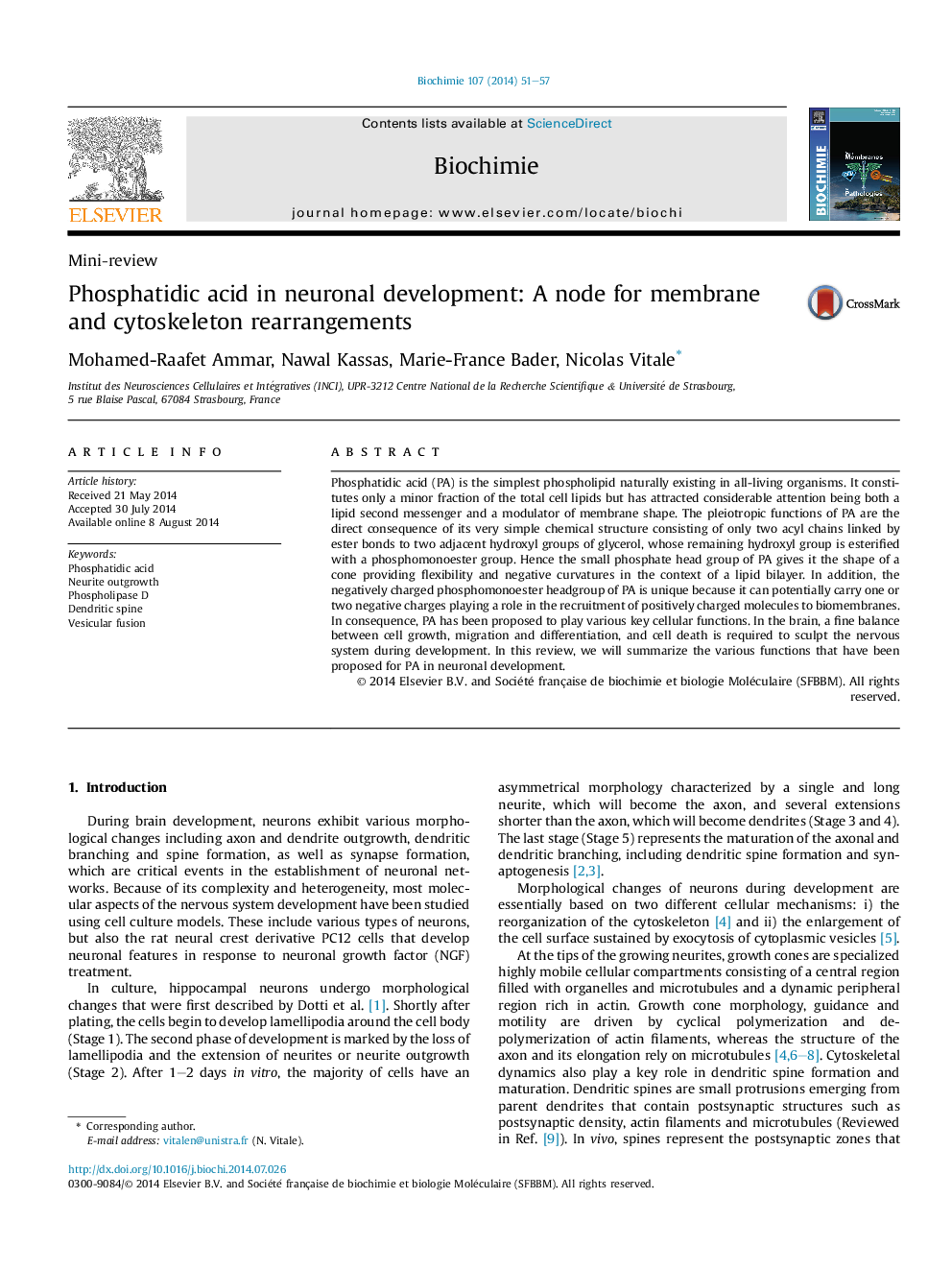| کد مقاله | کد نشریه | سال انتشار | مقاله انگلیسی | نسخه تمام متن |
|---|---|---|---|---|
| 1952091 | 1057164 | 2014 | 7 صفحه PDF | دانلود رایگان |
• Latest functions for phosphatidic acid in neuronal development.
• Phosphatidic acid produced by phospholipase D or diacylglycerol kinase.
• Phosphatidic acid partners regulating actin dynamics and membrane trafficking.
Phosphatidic acid (PA) is the simplest phospholipid naturally existing in all-living organisms. It constitutes only a minor fraction of the total cell lipids but has attracted considerable attention being both a lipid second messenger and a modulator of membrane shape. The pleiotropic functions of PA are the direct consequence of its very simple chemical structure consisting of only two acyl chains linked by ester bonds to two adjacent hydroxyl groups of glycerol, whose remaining hydroxyl group is esterified with a phosphomonoester group. Hence the small phosphate head group of PA gives it the shape of a cone providing flexibility and negative curvatures in the context of a lipid bilayer. In addition, the negatively charged phosphomonoester headgroup of PA is unique because it can potentially carry one or two negative charges playing a role in the recruitment of positively charged molecules to biomembranes. In consequence, PA has been proposed to play various key cellular functions. In the brain, a fine balance between cell growth, migration and differentiation, and cell death is required to sculpt the nervous system during development. In this review, we will summarize the various functions that have been proposed for PA in neuronal development.
Journal: Biochimie - Volume 107, Part A, December 2014, Pages 51–57
